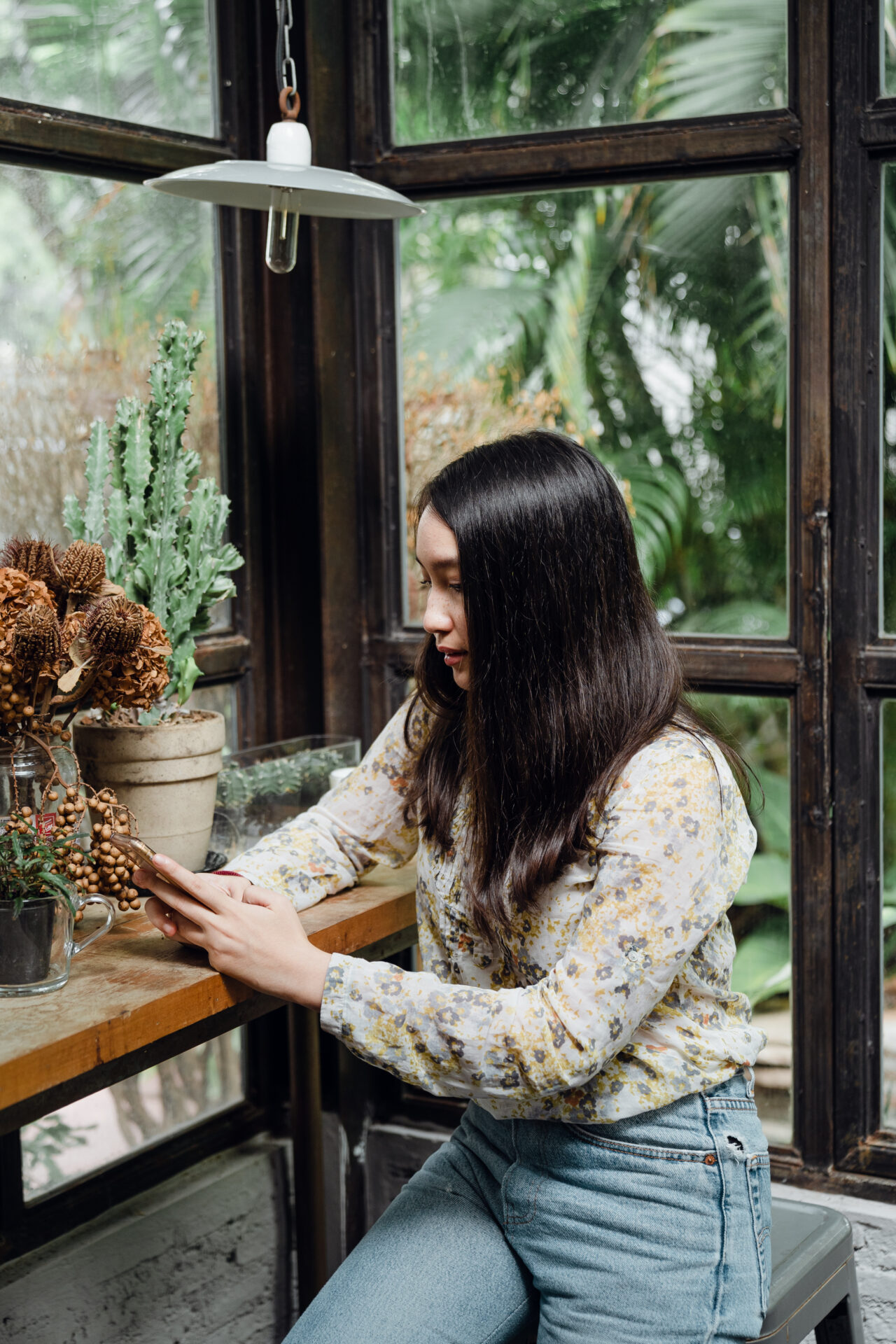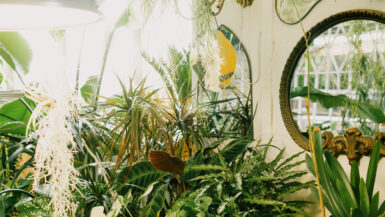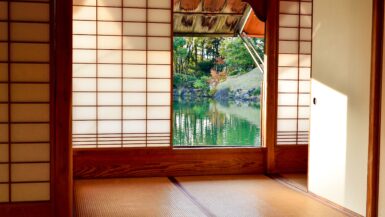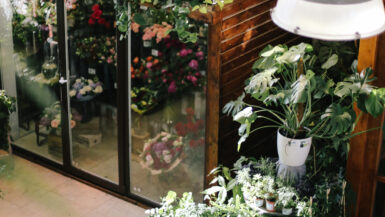An indoor vertical garden with climbing plants has emerged as a popular and innovative solution for urban dwellers seeking to maximize limited space while cultivating a lush green oasis in their homes.
In this article, we will explore creating an indoor vertical garden with climbing plants, delving into critical aspects such as choosing the suitable plant species, selecting appropriate support structures, and maintaining your vertical garden’s overall health and growth.
Through our comprehensive guide, you will be equipped with the knowledge and inspiration needed to transform any indoor space into a flourishing, eco-friendly environment that enhances your home’s aesthetic and contributes to improved air quality and overall well-being. So, let us embark on this exciting journey towards greener living with the art of indoor vertical gardening.
Maintaining and Caring for Your Indoor Vertical Garden
Establishing an indoor vertical garden with climbing plants is the beginning of your journey toward a greener living space. Proper maintenance and care are essential to ensure your garden continues to thrive.
This section will discuss critical aspects of maintaining your indoor vertical garden, such as watering, pruning, and pest control. Following these guidelines ensures that your climbing plants remain healthy, vibrant, and essential to your indoor sanctuary.
Watering Techniques for Vertical Gardens
Proper watering is crucial in maintaining the health of your indoor vertical garden. Each plant species has specific water requirements, so it is essential to research and understand each plant’s needs. One helpful tip is to use a drip irrigation system, which can effectively deliver water to the plants without causing excessive moisture on the walls or floor.
Additionally, consider exploring innovative indoor vertical garden systems and technologies that offer self-watering features, making the task even more accessible.
Pruning and Training Your Climbing Plants
Regular pruning and training of your climbing plants maintain the aesthetic appeal of your vertical garden and promote healthy growth. Remove dead or damaged foliage to encourage new growth and prevent the spread of diseases.
When training your plants, gently guide their growth around the support structure, ensuring that they have ample space to climb and spread. This process will help maintain your indoor vertical garden’s overall structure and appearance.
Monitoring Light and Temperature
Light and temperature are essential factors in the growth and well-being of your climbing plants. Ensure that your indoor vertical garden receives adequate sunlight or artificial light, as required by the specific plant species.
You may need to rotate or adjust the position of your garden to optimize light exposure. Additionally, be mindful of the temperature in your indoor space, as extreme temperature fluctuations can negatively impact plant health.
Pest Control and Disease Management
Like any other garden, indoor vertical gardens can be susceptible to pests and diseases. Regularly inspect your plants for signs of infestation or illness, such as discolored leaves, wilting, or visible pests. Implement organic pest control methods, such as introducing beneficial insects or DIY remedies like neem oil or insecticidal soaps.
Addressing issues early can prevent the spread of pests and diseases, ensuring the longevity of your indoor vertical garden.
By diligently attending to the needs of your climbing plants, you can maintain a thriving indoor vertical garden that brings life and vitality to your living space. Embrace nurturing your garden, and revel in the rewards of your flourishing green haven.
Choosing the Right Climbing Plants for Indoor Vertical Gardens
Selecting appropriate climbing plants for your indoor vertical garden ensures its success and longevity. The choice of plants should be based on factors such as available light, humidity, and your personal preferences. In this subsection, we will discuss various aspects of choosing the right climbing plants for your indoor vertical garden and some popular options to consider.
Understanding Light and Space Requirements
Before selecting your climbing plants, it is essential to assess your indoor environment’s light and space conditions. Please note the amount of natural light your space receives and its intensity. Additionally, consider the size of the area you have available for your vertical garden.
By understanding these factors, you can choose climbing plants well-suited to your indoor conditions, ensuring optimal growth and health.
Considering Plant Maintenance and Care
Another essential aspect to consider when choosing climbing plants for your indoor vertical garden is the maintenance and care required. Opt for plants that match your desired level of involvement in their upkeep.
Some climbing plants, such as regular pruning and training, may need more attention, while others may be low-maintenance and require minimal intervention. Selecting plants that align with your preferences will create a positive and enjoyable gardening experience.
Popular Climbing Plants for Indoor Vertical Gardens
With many climbing plants available, deciding which ones best suit your indoor vertical garden can be overwhelming. Here are a few popular options to consider:
- Pothos (Epipremnum aureum): This hardy and adaptable plant is an excellent choice for beginners, as it thrives in various light conditions and requires minimal maintenance.
- English Ivy (Hedera helix): Known for its elegant, trailing vines, it is a classic choice for indoor vertical gardens. It prefers bright, indirect light and requires consistent moisture.
- Philodendron (Philodendron spp.): With numerous species, philodendrons offer a diverse range of foliage shapes, sizes, and colors. They are generally low-maintenance and can tolerate a range of light conditions.
- Swiss Cheese Plant (Monstera adansonii): This trendy plant features unique, perforated leaves and is very popular for indoor vertical gardens. It thrives in bright, indirect light and requires regular watering.
When selecting climbing plants for your indoor vertical garden, consider light and space requirements, maintenance preferences, and plant variety. Choosing plants well-suited to your indoor environment and personal tastes can create a thriving, visually appealing garden that enhances your living space and contributes to your overall well-being.
Techniques for Training Climbing Plants Indoors
Training climbing plants is vital to creating a successful indoor vertical garden. Proper plant training enhances your garden’s visual appeal and contributes to your plant’s overall health and growth. In this section, we will delve into various techniques for training climbing plants indoors, helping you cultivate a well-structured and flourishing vertical garden.
Choosing the Right Support System
One of the first steps in training climbing plants indoors is selecting an appropriate support system. The type of support you choose will depend on your plants’ size and growth habits, your personal preferences, and your available space.
Some popular support options include trellises, wall-mounted wire grids, tension rods with hooks, or even repurposed ladders. Experiment with different support systems to find the one that best suits your plants and indoor environment.
Guiding Plant Growth
Once you have chosen a suitable support system, it’s time to begin guiding your climbing plants’ growth. Gently wrap the vines or stems around the support structure, ensuring they have ample space to climb and spread.
As your plants grow, continue to train them by adjusting their direction and positioning. This process not only maintains the overall structure and appearance of your indoor vertical garden but also encourages healthy growth and prevents overcrowding.
Securing Your Climbing Plants
As you train your climbing plants, you may need to secure them to the support structure to ensure they remain in place. Various methods are available to achieve this, such as using plant ties, soft twine, or even repurposed materials like old stockings or strips of fabric.
When securing your plants, be careful not to constrict the stems or damage the foliage. Regularly check and adjust the ties to accommodate the plants’ growth and prevent potential harm.
Pruning and Maintenance
Regular pruning is essential for training climbing plants indoors. By removing dead or damaged foliage, you encourage new growth and prevent the spread of diseases. Additionally, pruning lets you maintain your indoor vertical garden’s desired shape and appearance.
As you prune your plants, consider their specific growth habits and requirements. Some plants may need more frequent pruning, while others only require occasional trimming.
By implementing these techniques, you can effectively train your climbing plants, creating an indoor vertical garden that is visually stunning and contributes to a healthier and more vibrant living space. As you nurture your plants and guide their growth, you will be rewarded with a thriving, green oasis that brings life and energy to your home.
Benefits of Indoor Vertical Garden with Climbing Plants
Indoor vertical gardening with climbing plants enhances the aesthetic appeal of your living space and offers an array of practical and health-related benefits. This section will explore the advantages of incorporating climbing plants into your indoor vertical garden, shedding light on how this innovative gardening approach can contribute to a more vibrant, eco-friendly, and healthier lifestyle.
Space Optimization and Flexibility
One of the primary benefits of indoor vertical gardening with climbing plants is the efficient use of space, especially in urban dwellings where square footage can be limited. By growing plants vertically, you can create a lush green haven without sacrificing valuable floor space.
Furthermore, vertical gardens offer flexibility in design. They can be easily adapted to suit the specific dimensions of your indoor environment, allowing you to make the most of every available surface.
Improved Air Quality and Humidity
Indoor vertical gardens with climbing plants can significantly improve air quality in your living space. Plants are natural air purifiers, absorbing pollutants and releasing oxygen through photosynthesis. The increased plant coverage provided by vertical gardens can enhance this air-purifying effect, promoting a cleaner and healthier indoor environment.
In addition, plants can help regulate humidity levels, creating a more comfortable and balanced atmosphere.
Stress Reduction and Mental Well-being
The presence of plants in your living space has been linked to numerous psychological benefits, including stress reduction, improved mental well-being, and increased focus and productivity. The lush greenery of an indoor vertical garden with climbing plants can create a calming and soothing atmosphere, acting as a natural stress reliever amid a bustling urban lifestyle.
As you nurture and care for your plants, you can also experience a sense of accomplishment and satisfaction, which can further contribute to your overall happiness and well-being.
Biophilic Design and Aesthetic Appeal
Indoor vertical gardens with climbing plants are a prime example of biophilic design. They integrate elements of nature into your living space to create a more harmonious and visually appealing environment. Climbing plants offer various foliage shapes, colors, and textures, allowing you to create a truly unique and captivating garden display.
As your plants grow and flourish, your vertical garden can become a living work of art, transforming your indoor space into an inspiring and rejuvenating sanctuary.
Opportunity for Urban Gardening and Sustainable Living
Indoor vertical gardening with climbing plants allows urban dwellers to participate in gardening activities and embrace a more sustainable lifestyle. Cultivating your indoor garden can help you develop a deeper connection with nature and greater environmental appreciation.
Additionally, some climbing plants are suitable for growing edible produce, such as beans, peas, or even small fruit varieties, contributing to a more self-sufficient and eco-friendly way of living.
Embracing indoor vertical gardening with climbing plants can yield many benefits, from optimizing limited space to promoting improved air quality, mental well-being, and sustainable living. As you cultivate your indoor vertical garden, you will create a visually stunning living space and contribute to a healthier, more eco-conscious lifestyle that nurtures both your body and soul.
Essential Supplies for Setting Up an Indoor Vertical Garden With Plants
As you embark on your journey to create an indoor vertical garden with climbing plants, gathering the essential supplies needed for a successful setup is crucial. These essential items will help you establish a strong foundation for your garden and ensure its longevity and overall health.
In this subsection, we will delve into the necessary supplies and equipment for setting up an indoor vertical garden, providing you with a comprehensive guide to help you bring your green oasis to life.
Selecting the Right Containers and Planters
Choosing appropriate containers and planters for your climbing plants is essential in setting up your indoor vertical garden. The correct container should provide adequate drainage, sufficient space for root development, and suitable materials that can withstand the weight and moisture levels associated with vertical gardening.
Consider using hanging planters, wall-mounted pots, or even repurposed items such as wooden crates or pallets to create a unique and visually appealing garden display.
Investing in High-Quality Soil and Fertilizers
Providing your climbing plants with high-quality soil and fertilizers is crucial for their growth and health. Opt for a well-draining potting mix that retains moisture while allowing excess water to escape, preventing root rot and other issues.
Additionally, choose fertilizers specifically formulated for the plant species in your vertical garden, ensuring they receive the necessary nutrients to thrive. Organic fertilizers, such as compost or worm castings, are excellent for promoting sustainable gardening practices.
Installing Proper Support Structures
As previously mentioned, support structures play a vital role in the success of your indoor vertical garden with climbing plants. Based on your chosen plants’ size, growth habits, and preferences, select a support system that provides ample space for them to climb and spread.
Popular options include trellises, wire grids, or tension rods with hooks. Investing in proper support structures can create a well-organized and visually stunning garden that encourages healthy plant growth.
Implementing Efficient Watering Solutions
Ensuring your climbing plants receive adequate water is essential to maintaining their health and vitality. Consider implementing efficient watering solutions such as drip irrigation systems or self-watering planters to streamline this task. These options can help conserve water while delivering the necessary moisture to your plants, making caring for your indoor vertical garden more manageable and eco-friendly.
Investing in Adequate Lighting Solutions
Light is critical to the growth and well-being of climbing plants. If your indoor space lacks sufficient natural light, investing in artificial lighting solutions, such as grow lights or LED lamps, can help ensure your plants receive the necessary light exposure for photosynthesis.
Carefully research the specific light requirements of your chosen plant species and select lighting solutions that meet those needs, promoting optimal growth and overall health.
These essential supplies and equipment will equip you to set up a thriving indoor vertical garden with climbing plants. With careful planning and attention to the specific needs of your chosen plants, you can create a lush, vibrant oasis that enhances the aesthetic appeal of your living space and contributes to a healthier, more sustainable lifestyle.







Leave a reply